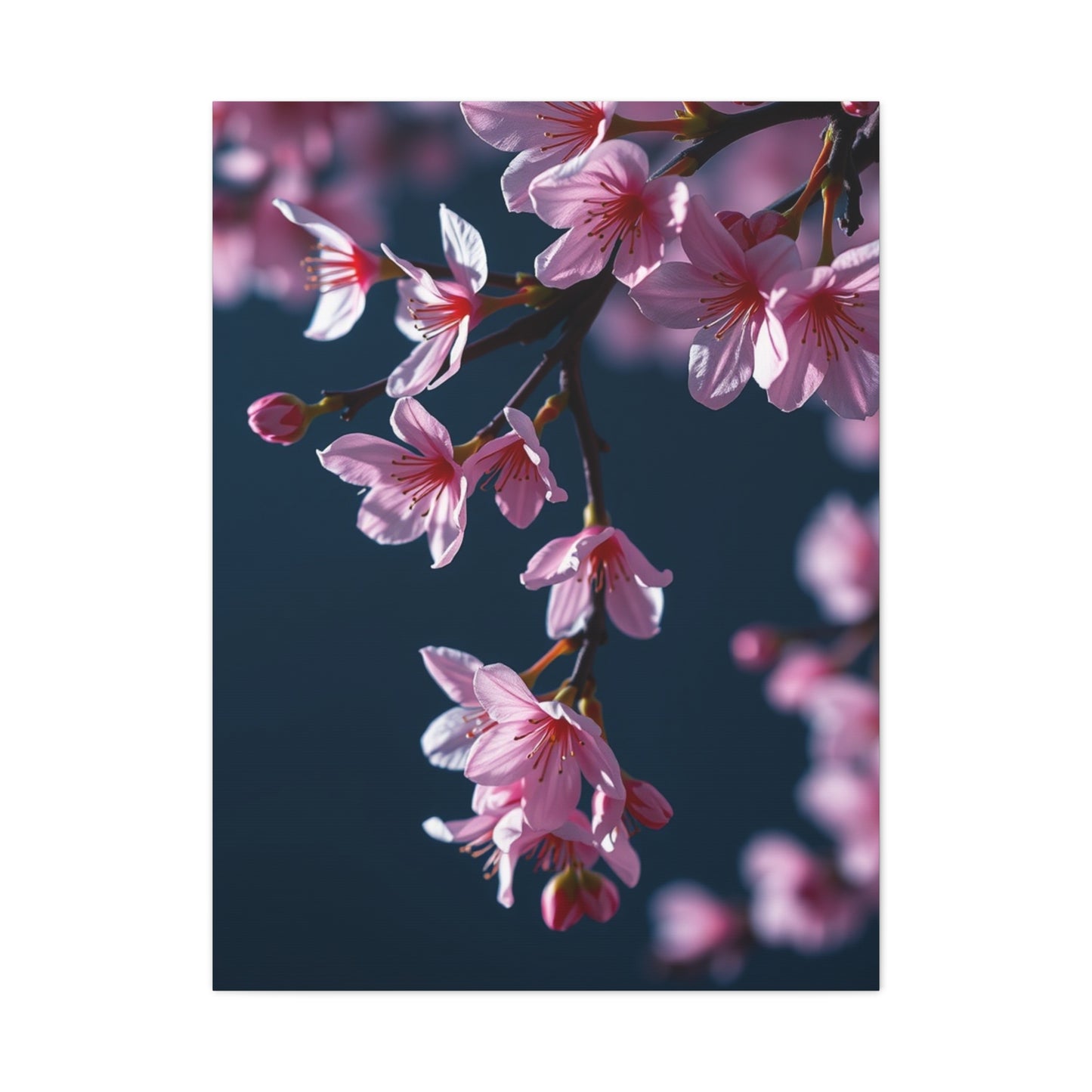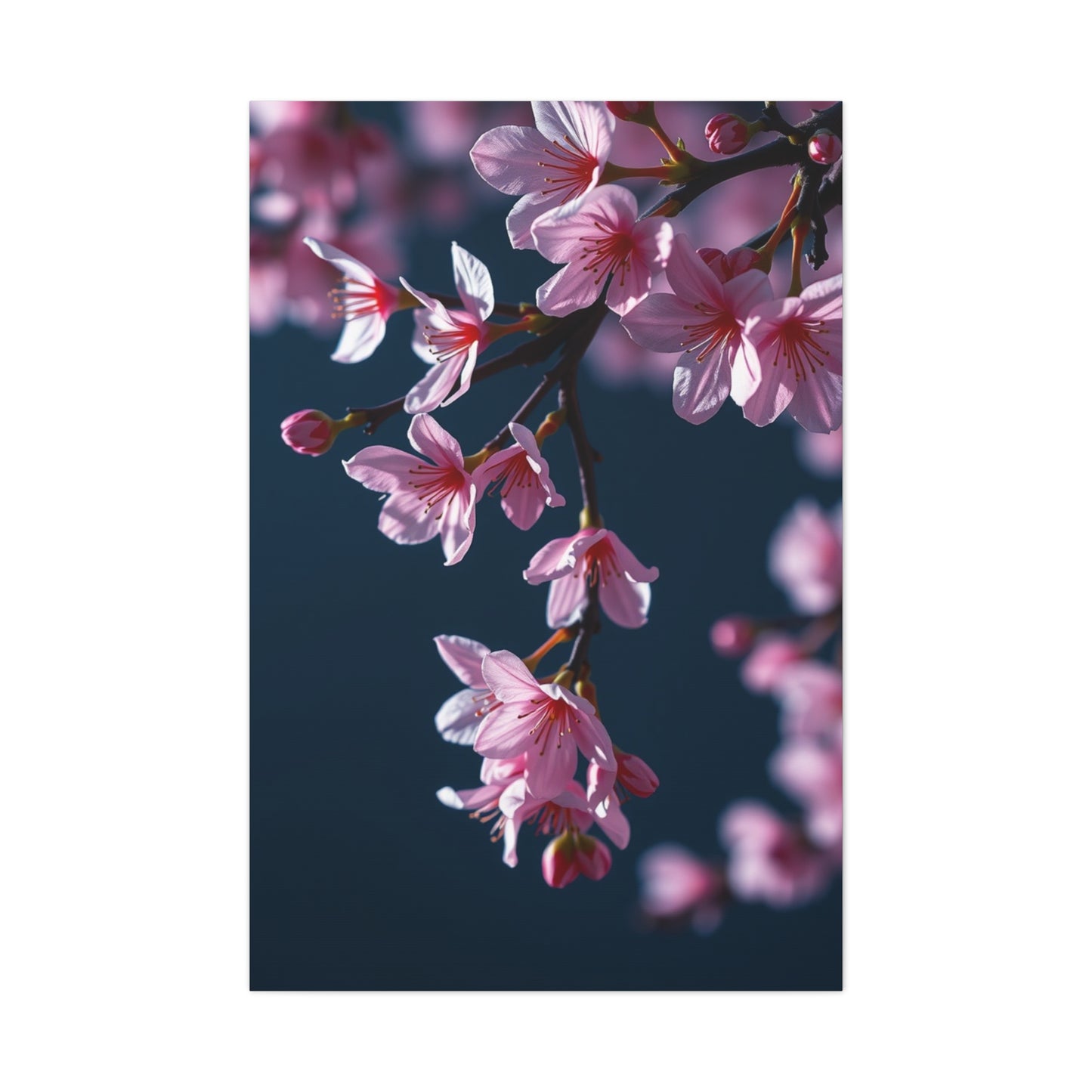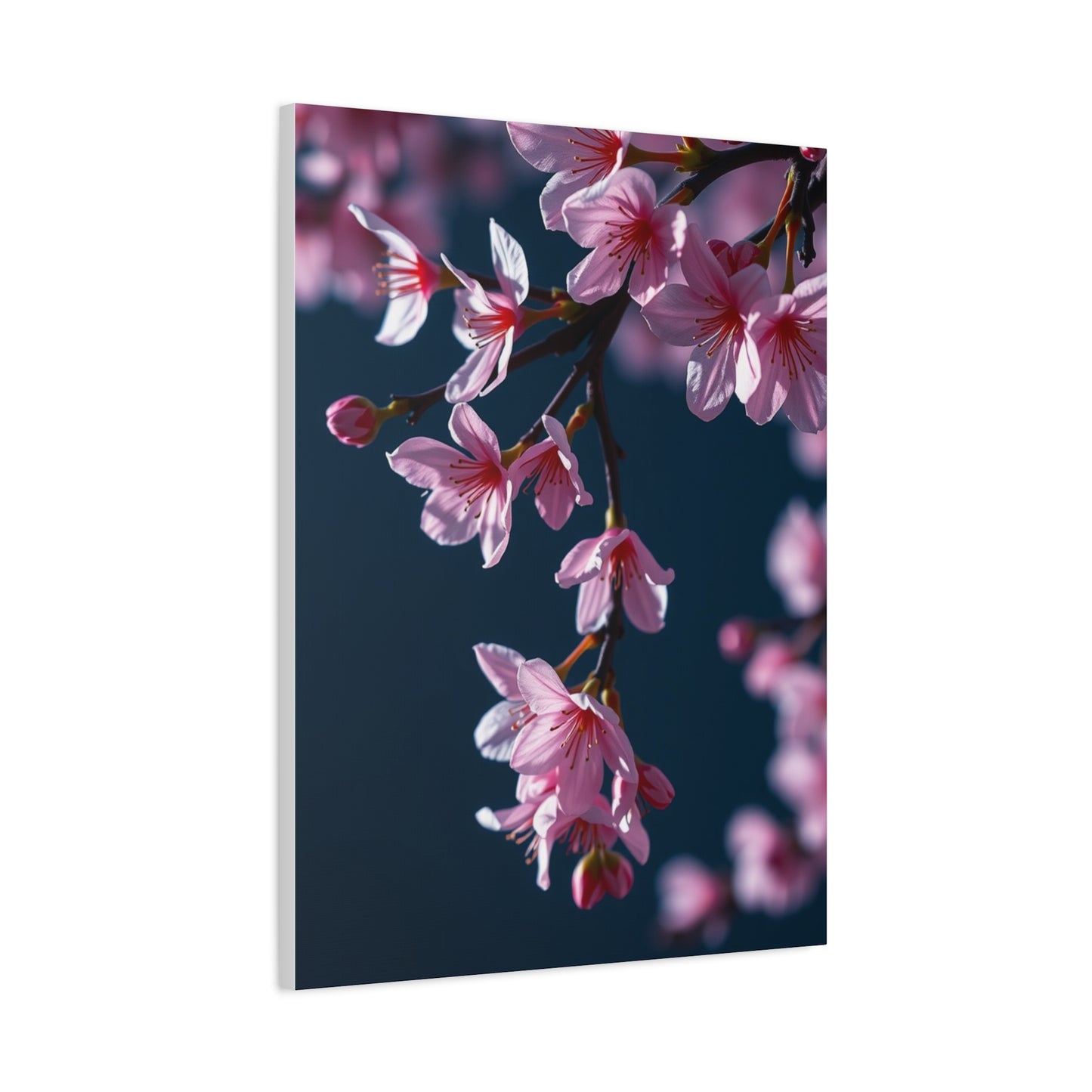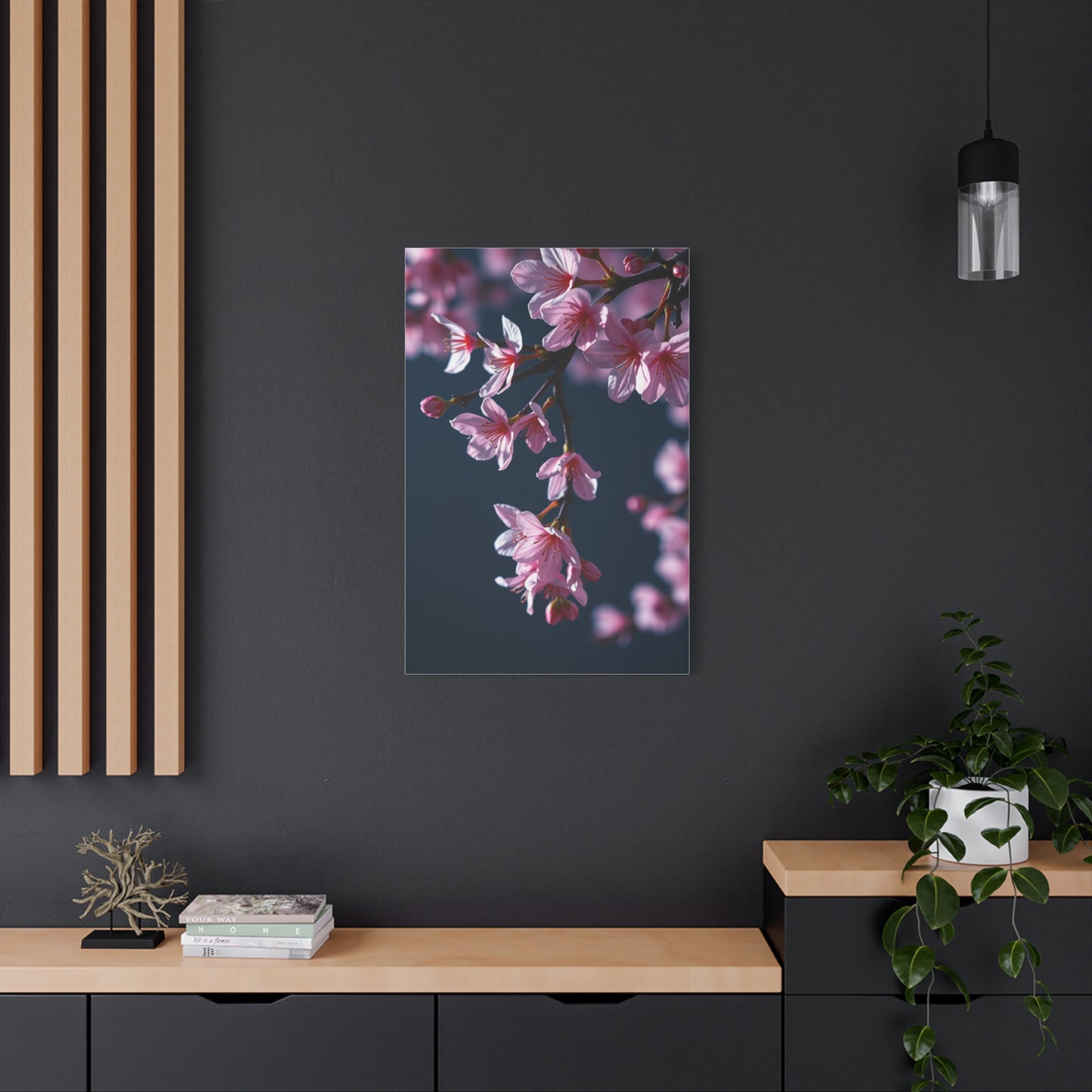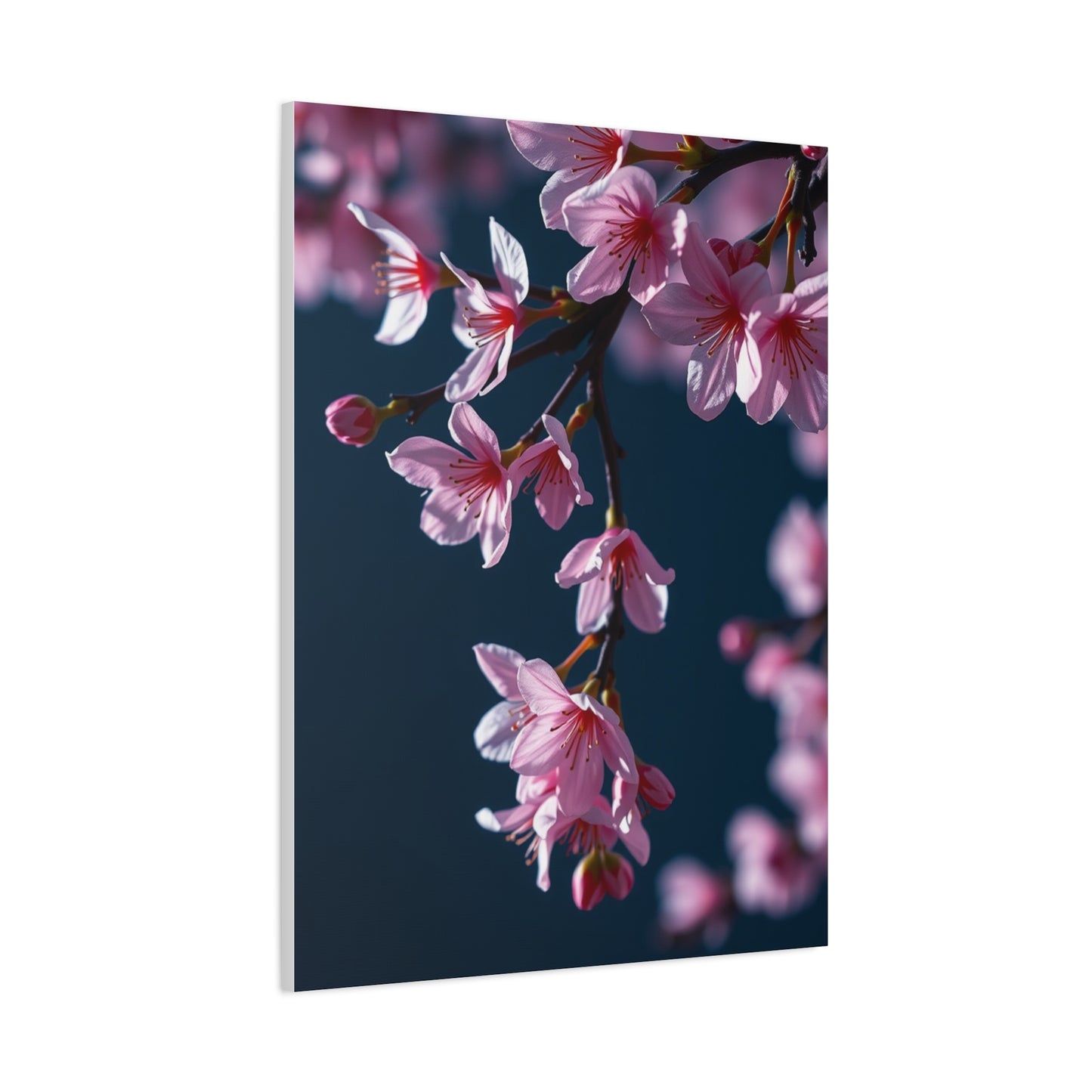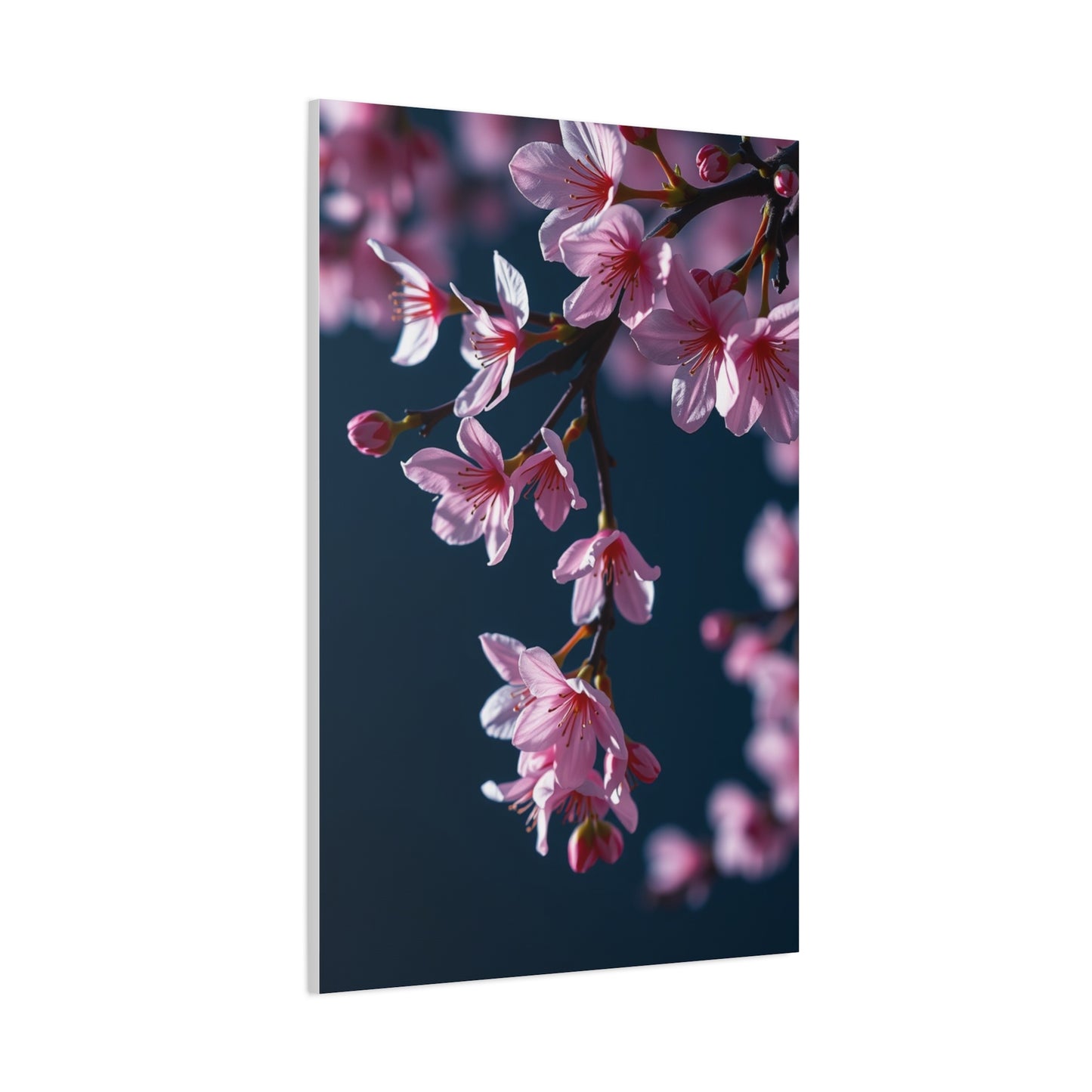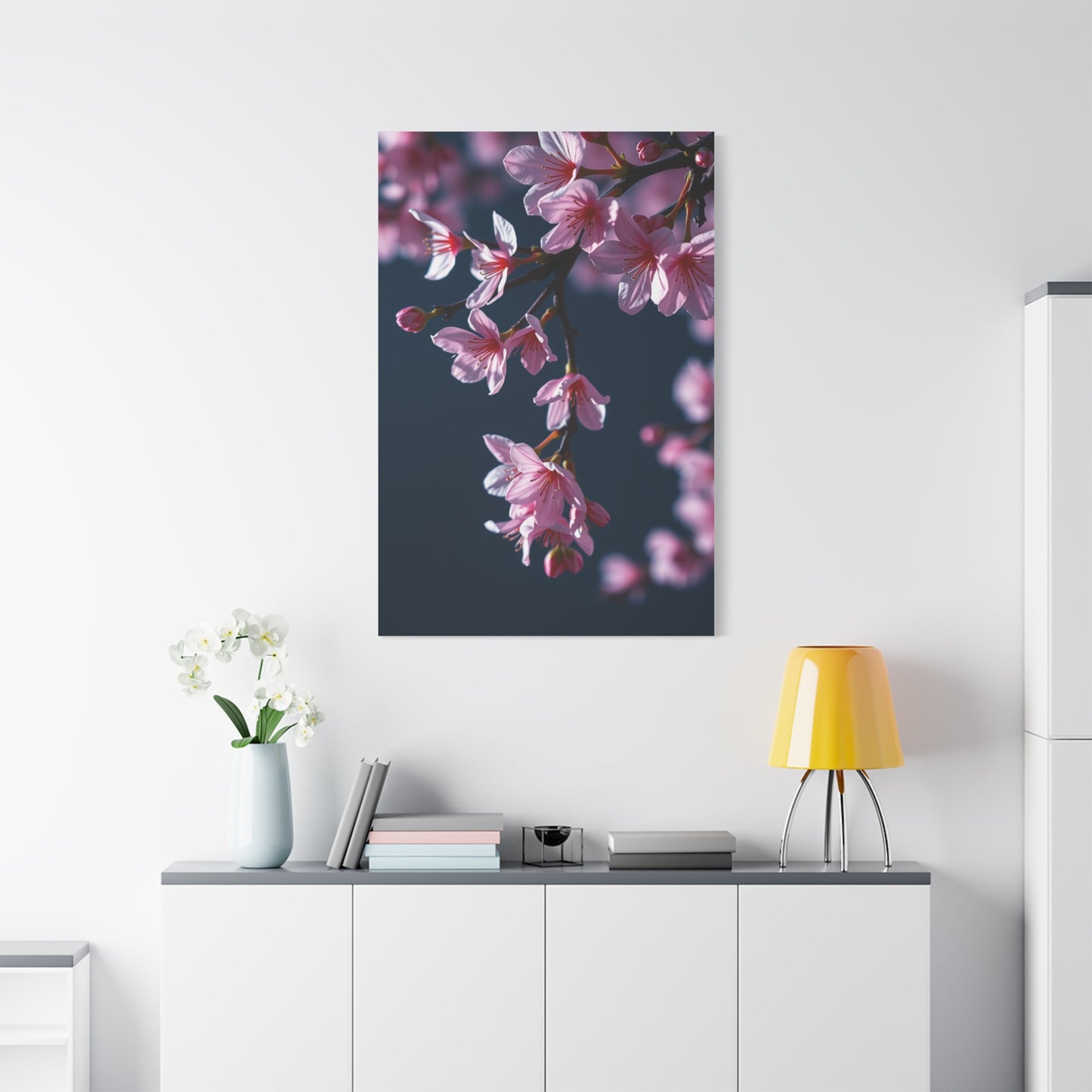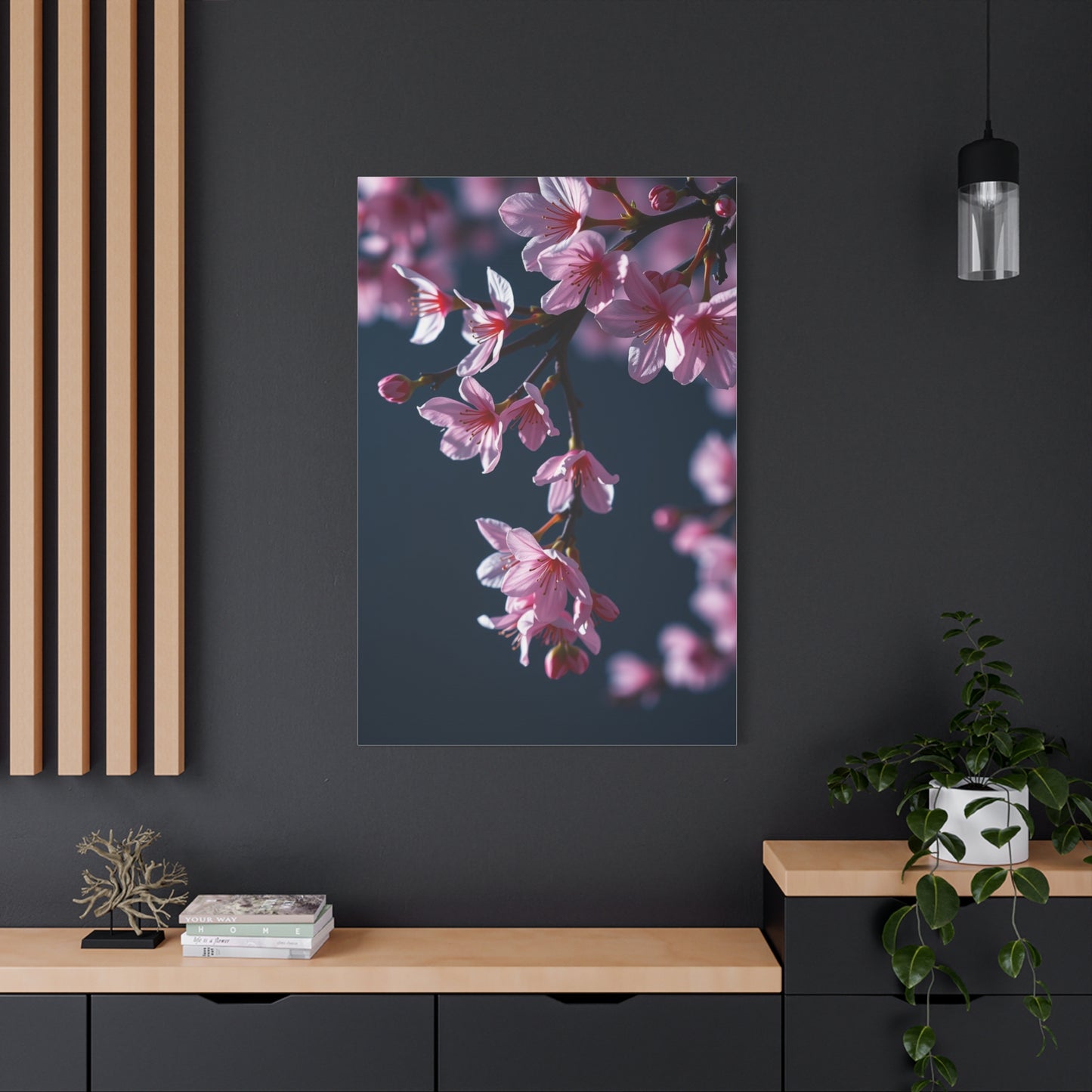Ethereal Bloom Panorama: A Journey Through Nature's Most Captivating Floral Landscapes
The world of flowers presents an endless canvas of beauty that stretches across continents, climates, and cultures. When we speak of ethereal bloom panorama, we refer to those breathtaking moments when nature displays its most magnificent floral spectacles, creating scenes that seem almost otherworldly in their splendor. These panoramic displays of blooming flowers have captivated humanity for millennia, inspiring artists, poets, gardeners, and nature enthusiasts to seek out and preserve these fleeting moments of botanical perfection.
The phenomenon of mass flowering events creates landscapes that transform ordinary terrain into extraordinary vistas filled with color, fragrance, and life. From the wildflower superbloom events that occasionally grace desert landscapes to the carefully cultivated flower fields of commercial farms, these panoramic views of blooming plants offer viewers a chance to witness nature's artistry on a grand scale. Understanding what creates these spectacular displays, where to find them, and how they impact both natural ecosystems and human culture provides insight into one of nature's most beloved phenomena.
The Science Behind Mass Blooming Events
Mass flowering events represent one of nature's most complex and fascinating phenomena, involving intricate interactions between plants, environmental conditions, and ecological timing. These spectacular displays occur when large populations of plants bloom simultaneously, creating the panoramic floral vistas that captivate observers. The biological mechanisms that trigger these events have evolved over millions of years, representing sophisticated adaptations that help plants maximize their reproductive success.
Plants have developed various strategies for timing their blooms, with some species relying on photoperiod sensitivity to detect seasonal changes in day length. This internal clock allows plants to prepare for flowering when conditions are most favorable for pollination and seed development. Temperature accumulation models also play a crucial role, as many plants track the cumulative warmth they receive over time, triggering flowering once a specific threshold is reached. This ensures that blooms appear when temperatures are suitable for pollinator activity and seed maturation.
Moisture availability serves as another critical trigger for mass blooming events, particularly in arid and semi-arid regions. Desert wildflower superbloom events provide dramatic examples of this phenomenon, occurring only when precise rainfall conditions are met during specific windows of time. These rare events can transform barren landscapes into carpets of colorful flowers within weeks, as dormant seeds that may have waited years for suitable conditions suddenly germinate and rush through their life cycles.
The synchronization of flowering within plant populations offers several evolutionary advantages. By blooming simultaneously, plants can overwhelm the capacity of seed predators, ensuring that at least some seeds survive to germinate. This strategy, known as predator satiation, works particularly well when large numbers of plants participate. Synchronized blooming also improves pollination efficiency, as the concentrated floral resources attract large numbers of pollinators to relatively small areas, increasing the likelihood of successful pollen transfer between plants.
Environmental stress can sometimes trigger mass flowering events as well. Some bamboo species famously flower gregariously after decades of vegetative growth, with all plants of the same cohort blooming simultaneously before dying. Scientists believe this behavior may have evolved as a response to predation pressure or as a mechanism to ensure cross-pollination between genetically diverse individuals. The spectacle of entire bamboo forests flowering together represents one of the most remarkable examples of synchronized plant reproduction.
Climate variability increasingly affects the timing and intensity of mass flowering events. Changes in temperature patterns, precipitation timing, and extreme weather events can disrupt the environmental cues that plants rely on for flowering synchronization. Some regions have experienced shifts in traditional blooming seasons, with flowers appearing earlier or later than historical norms. These changes can create mismatches between plants and their pollinators, potentially affecting ecosystem function and the spectacular panoramic displays that result from well-timed mass blooming.
Understanding the mechanisms behind these events helps conservation efforts protect the conditions necessary for their occurrence. Many mass flowering events depend on specific habitat characteristics, including soil composition, drainage patterns, and the absence of competing vegetation. Human activities that alter these conditions can prevent or diminish flowering displays, making habitat protection essential for preserving these natural phenomena.
Desert Wildflower Superbloom Phenomena
Desert ecosystems present some of the most dramatic and unpredictable mass flowering events in the natural world. These superbloom phenomena transform harsh, seemingly lifeless landscapes into vibrant tapestries of color that can extend for hundreds of square miles. The rarity and magnificence of desert superblooms make them particularly sought-after spectacles, drawing visitors from around the globe when conditions align to produce these remarkable displays.
The deserts of North America, particularly those in California, Arizona, and parts of Mexico, host some of the most spectacular superbloom events. The Sonoran Desert, Mojave Desert, and Colorado Desert can all produce extraordinary flowering displays when conditions are right. These events typically occur in spring, roughly from February through April, though timing varies considerably based on elevation, latitude, and local weather patterns. The specific combination of factors required for a superbloom makes these events relatively rare, occurring perhaps once or twice per decade in any given location.
Rainfall timing and quantity prove absolutely critical for superbloom formation. Desert annual wildflowers have evolved to remain dormant as seeds until very specific moisture conditions are met. The seeds must receive sufficient rain during fall and winter months to germinate, but not so much that the delicate seedlings are washed away or succumb to fungal diseases. Typically, a superbloom requires several inches of rain spread across multiple events during the dormancy-breaking period, followed by additional moisture during the growth phase.
Temperature patterns during the growth season also influence superbloom intensity and duration. Cool temperatures following germination allow plants to establish strong root systems before flowering, while moderate temperatures during the blooming period extend the display duration. Extreme heat can cause flowers to complete their life cycles rapidly, shortening the viewing window for these ephemeral displays. Wind patterns affect superbloom formation as well, as excessive winds during germination can damage tender seedlings or dry out soil too quickly.
The diversity of species participating in desert superblooms creates complex patterns of color and texture across the landscape. Different species occupy distinct ecological niches based on soil type, drainage, elevation, and exposure. This natural sorting creates bands and patches of color that shift as viewers move through the landscape. Species that commonly participate in superblooms include various lupines, poppies, desert sunflowers, brittlebush, sand verbena, desert marigold, and numerous other annuals that have adapted to ephemeral desert conditions.
Photography of desert superblooms has become increasingly popular, with enthusiasts planning trips years in advance and monitoring conditions carefully to time their visits. The interplay of colorful flowers with dramatic desert landforms creates compelling compositions. Early morning and late afternoon light enhances the colors and creates long shadows that emphasize the three-dimensional structure of the landscape. Wide-angle lenses capture the sweeping panoramic quality of these displays, while macro lenses reveal the intricate beauty of individual flowers.
The ecological importance of desert superblooms extends far beyond their aesthetic appeal. These events provide critical resources for desert wildlife, including insects, birds, and mammals that depend on the sudden abundance of nectar, pollen, and seeds. Pollinator populations can surge during superbloom years, with bees, butterflies, and other insects taking advantage of the floral bonanza. This temporary abundance ripples through food webs, supporting predators and creating conditions for successful reproduction among many species.
Climate patterns such as El Niño and La Niña influence the likelihood of superbloom conditions developing in desert regions. El Niño years, which typically bring increased moisture to southwestern deserts, often correlate with improved superbloom potential. However, the relationship between large-scale climate patterns and local flowering conditions remains complex, with many variables affecting outcomes. Long-term climate change may alter the frequency and character of superbloom events, though predictions remain uncertain given the complexity of desert ecosystems.
Conservation challenges face many desert regions that produce superbloom displays. Off-road vehicle use can damage fragile desert soils and destroy wildflower populations before they complete their life cycles. The popularity of superblooms has led to increased visitor pressure in some areas, with trampling and illegal collecting threatening plant populations. Land management agencies have implemented various strategies to protect wildflower areas, including designated viewing areas, temporary road closures, and educational programs that encourage responsible viewing practices.
Mountain Meadow Bloom Sequences
Mountain environments host some of the most spectacular progressive flowering displays found anywhere on Earth. As snowpack melts and temperatures warm at different elevations, waves of flowering sweep up mountainsides in predictable sequences that create ever-changing panoramic displays throughout spring and summer. These bloom progressions can last for months, offering extended opportunities to witness different communities of wildflowers at their peak.
The phenomenon of elevational bloom progression results from the temperature and moisture gradients that exist on mountain slopes. Lower elevations warm earlier in spring, triggering flowering in plants adapted to those conditions. As the season advances, the flowering wave moves progressively higher, following the retreating snowline and warming temperatures. This creates a natural calendar of blooms that experienced observers can predict with reasonable accuracy, allowing them to time visits to catch specific species or communities at their best.
Alpine wildflower displays at the highest elevations present some of the most intense and concentrated flowering events. These plants must complete their entire annual cycle during the brief window between snowmelt and the return of winter conditions. The result is often an explosive burst of flowering, with multiple species blooming simultaneously to create dense carpets of color. Alpine environments in mountain ranges worldwide, from the Rockies to the Alps to the Himalayas, host these compressed bloom seasons that create memorable panoramic views.
Subalpine meadows at intermediate elevations typically host the most diverse and prolonged flowering displays. These environments benefit from adequate moisture, moderate temperatures, and relatively long growing seasons compared to higher elevations. Species diversity in subalpine meadows can be remarkable, with dozens of flowering plant species coexisting in close proximity. The composition of flowering plants shifts throughout the season as different species reach their bloom peaks, creating an evolving palette of colors and forms.
Moisture availability varies considerably across mountain landscapes, creating distinct bloom patterns in wet versus dry microsites. Seeps, streams, and snowmelt zones support hydrophilic species that create lush displays of moisture-loving flowers. In contrast, well-drained ridges and south-facing slopes host drought-tolerant species adapted to drier conditions. This environmental heterogeneity increases overall diversity and creates complex mosaics of flowering plants across the mountain landscape.
Iconic mountain wildflower regions attract visitors specifically to witness their bloom displays. The Colorado Rockies host legendary displays of columbine, Indian paintbrush, lupine, and numerous other species. Mount Rainier National Park in Washington showcases spectacular subalpine meadows filled with avalanche lilies, monkey flowers, and heather. The European Alps offer their own suite of mountain flowers, including gentians, edelweiss, and alpine roses that have inspired cultural traditions for centuries.
Hiking through mountain meadows during peak bloom periods provides immersive experiences with these floral panoramas. Trails that traverse multiple elevation zones allow visitors to witness the bloom progression firsthand, encountering different communities as they gain or lose altitude. The sensory experience includes not just visual beauty but also the fragrance of flowers, the sound of pollinating insects, and the texture of meadow grasses and flowers brushing against legs on narrow trails.
Photography in mountain meadows presents both opportunities and challenges. The dramatic landscapes provide stunning backdrops for wildflower compositions, while variable mountain weather can create constantly changing light conditions. Photographers often employ foreground flowers to frame distant peaks, creating depth and context in their images. The wide-open spaces of mountain meadows lend themselves to panoramic photography techniques that can capture the sweeping nature of these displays.
Climate change impacts on mountain flowering displays have become increasingly apparent in recent decades. Earlier snowmelt, shifting temperature patterns, and changing precipitation regimes all affect bloom timing and intensity. Some regions have documented significant advancement in flowering times, with blooms occurring weeks earlier than historical norms. These phenological shifts can create mismatches between plants and their pollinators, potentially disrupting the intricate relationships that have evolved over millennia.
Conservation of mountain meadow ecosystems faces various pressures including recreation impacts, invasive species, and climate-driven changes. Popular meadows can suffer from trail braiding and trampling as visitors leave established paths to photograph flowers or explore. Education efforts emphasize staying on trails and practicing leave-no-trace principles to minimize impacts. Some areas implement seasonal closures during critical bloom periods to protect sensitive plant communities.
Cultivated Flower Fields and Agricultural Panoramas
Human cultivation of flowers on an agricultural scale creates some of the most visually striking and accessible floral panoramas anywhere on Earth. Unlike wild flowering events that depend on unpredictable environmental conditions, cultivated flower fields offer reliable, often spectacular displays that have become tourist attractions in their own right. These managed landscapes demonstrate how human horticultural knowledge can create panoramic beauty while serving commercial purposes.
The Netherlands stands as the world's most famous example of cultivated flower field panoramas, particularly its tulip fields that bloom each spring. The carefully arranged rows of tulips in contrasting colors create almost abstract patterns across the flat polder landscapes. These fields represent both a major agricultural industry and a significant tourism draw, with visitors traveling internationally to witness the peak bloom period that typically occurs in April and early May. The Keukenhof gardens showcase cultivated bulbs in designed landscapes that complement the surrounding commercial fields.
Lavender fields in Provence, France represent another iconic example of agricultural floral panoramas. The purple-blue expanses of flowering lavender create scenes that have become synonymous with the French countryside. Bloom timing typically occurs in June and July, when the plants reach full flower before harvest. The visual impact combines with the powerful fragrance of lavender flowers to create a multisensory experience. These working farms welcome visitors during bloom season, offering opportunities to witness traditional cultivation and harvesting methods.
Sunflower fields create bold, graphic landscapes during their bloom periods in summer. These annual crops are grown commercially for seeds and oil production, but their flowering stage creates temporary panoramic displays that attract photographers and tourists. Major sunflower-producing regions in France, Spain, Kansas, and many other locations around the world host impressive fields where millions of large flower heads turn in unison to track the sun across the sky.
Rose cultivation on a commercial scale produces fragrant floral landscapes, particularly in regions that supply the perfume industry. The Grasse region of France has long been associated with rose cultivation for perfume production, though the industry has declined from its historical peak. Bulgaria's Valley of Roses continues to produce rose oil on a significant scale, with fields of Rosa damascena creating pink panoramas during the May harvest season. These working landscapes connect visitors to ancient traditions of plant cultivation and processing.
Cut flower production farms in regions with favorable climates create temporary floral displays during growing seasons. Areas like California's Central Coast, Ecuador, Colombia, and Kenya host extensive cut flower operations that grow everything from carnations to chrysanthemums. While these farms primarily focus on production rather than tourism, some open their fields to visitors, offering opportunities to see flower cultivation on a commercial scale and purchase fresh-cut blooms directly from growers.
The economics of flower farming have evolved to incorporate agritourism as a significant revenue stream for many operations. Fields that once served purely agricultural purposes now welcome visitors who pay entrance fees, purchase products, and support local economies through tourism spending. This dual-purpose approach helps sustain farming operations while providing public access to beautiful landscapes. Many farms offer additional attractions like hayrides, farm stores, and educational programs that enhance the visitor experience beyond simply viewing flowers.
Planning visits to cultivated flower fields requires attention to bloom timing, which can vary by several weeks depending on weather conditions. Many commercial flower regions provide bloom forecasts and regular updates during flowering season to help visitors plan trips. Some farms offer online cameras or social media updates showing current conditions. Peak bloom periods typically last only a few weeks for any given crop, making timing crucial for optimal viewing.
Photography in cultivated flower fields offers different opportunities compared to natural flowering landscapes. The ordered rows and blocks of color create geometric patterns that can be emphasized through careful composition and aerial perspectives. Drone photography has become increasingly popular for capturing the graphic quality of large flower fields from above. Ground-level photography can focus on the details of individual flowers while including the expanse of the field in the background to establish context and scale.
Sustainability concerns in commercial flower production have led some farms to adopt more environmentally friendly practices. Organic certification, integrated pest management, water conservation, and soil health practices all contribute to more sustainable flower production. Some operations have transitioned to renewable energy sources and reduced their use of synthetic inputs. Consumers increasingly seek flowers produced with attention to environmental and social responsibility, creating market incentives for sustainable practices.
The relationship between wild and cultivated floral landscapes illustrates humanity's long engagement with flowering plants. Cultivation represents an intensification and manipulation of natural flowering processes, channeling plant biology toward human aesthetic and economic goals. Yet even highly managed flower fields participate in broader ecological networks, providing resources for pollinators and other wildlife. Understanding both wild and cultivated floral panoramas enriches appreciation for the diverse ways flowering plants interact with human culture and natural ecosystems.
Tropical Flowering Trees and Canopy Blooms
Tropical regions host spectacular flowering events that occur not at ground level but high in forest canopies, creating three-dimensional floral panoramas visible from below or from elevated vantage points. These canopy flowering events can transform entire forests with waves of color that appear suddenly as trees come into bloom synchronously. The visual impact of millions of flowers blooming simultaneously in tropical tree canopies creates some of nature's most impressive large-scale displays.
The jacaranda tree provides one of the most famous examples of tropical canopy flowering displays. Native to South America but now planted widely in tropical and subtropical cities worldwide, jacaranda trees produce masses of purple-blue tubular flowers that can completely cover the canopy. When large populations bloom simultaneously, entire streets, neighborhoods, or hillsides take on a purple hue that lasts for several weeks. Cities like Pretoria, South Africa and Brisbane, Australia have become famous for their extensive jacaranda displays during bloom season.
Flame trees, including species like Delonix regia and Brachychiton acerifolius, create brilliant displays of red and orange flowers that justify their common names. These trees shed their leaves before or during flowering, making the blooms even more prominent against bare branches and sky. The visual impact of flame trees in full bloom proves particularly striking in urban landscapes where individual trees stand out against buildings and infrastructure. Large plantings create memorable streetscapes during flowering periods.
Tabebuia species, particularly those with pink and yellow flowers, create spectacular displays across Latin American landscapes. These trees often bloom on leafless branches, producing clouds of color that can be visible for miles. Different Tabebuia species bloom at different times throughout the dry season, creating a progression of canopy flowering events. In some regions, the blooming of particular Tabebuia species serves as a natural phenological marker, signaling seasonal transitions that have cultural significance.
Tropical forest canopy flowering follows patterns linked to seasonal climate variations. Many tropical trees bloom during dry seasons when reduced water stress and increased light availability favor flower and fruit production. The timing of these blooms often synchronizes within populations, possibly triggered by environmental cues like day length changes or the first rains after a dry period. This synchronization creates concentrated flowering displays that maximize pollinator attraction and reproductive success.
Cauliflory and ramiflory represent unusual flowering strategies found in some tropical trees where flowers emerge directly from trunks or major branches rather than at branch tips. While these flowers may not create the sweeping canopy displays of other species, they present fascinating adaptations to tropical forest conditions. Examples include cacao trees, where flowers and fruits develop directly on trunks, and various fig species that produce their distinctive inflorescences on branches and trunks.
Bird and bat pollination dominate many tropical tree flowering systems, creating ecological relationships different from those in temperate regions where insects predominate. Flowers adapted for bird pollination often display bright red, orange, or yellow colors and produce copious nectar to fuel the high metabolism of avian pollinators. Bat-pollinated flowers typically open at night, producing strong odors and abundant nectar to attract nocturnal mammalian pollinators. These specialized pollination systems contribute to the high biodiversity of tropical forests.
Urban planting of tropical flowering trees has created artificial but spectacular floral panoramas in cities throughout the tropics and subtropics. Street tree plantings of uniform species or carefully designed mixtures create planned flowering sequences that provide year-round color in urban landscapes. These urban forests serve aesthetic, cultural, and ecological functions, providing habitat for wildlife, cooling effects in hot climates, and beauty that enhances quality of life for city residents.
Viewing tropical canopy blooms often requires different strategies than observing ground-level flowers. Elevated walkways and observation towers in botanical gardens and nature reserves provide opportunities to experience canopy flowers at eye level. Aerial perspective, whether from hilltops, tall buildings, or aircraft, reveals the full extent of canopy flowering displays. These elevated vantage points transform individual trees into elements of larger landscape-scale patterns.
Climate change impacts on tropical tree flowering patterns remain an area of active research. Changes in rainfall patterns, temperature extremes, and seasonal timing all potentially affect the environmental cues that trigger flowering. Some regions have documented shifts in traditional flowering times or changes in synchronization among populations. These alterations can affect pollinator relationships and have cascading effects through tropical ecosystems that depend on the resources provided by flowering trees.
Conservation of tropical flowering trees faces pressures from deforestation, urbanization, and climate change. Many spectacular flowering species have declined in their native ranges while becoming common in cultivation elsewhere. Protecting natural populations preserves the genetic diversity and ecological relationships that have evolved over millions of years. Botanical gardens and arboreta play important roles in conserving rare tropical flowering trees while making them accessible to public audiences.
Spring Ephemeral Wildflower Carpets
Temperate forest floors host remarkable flowering displays each spring as ephemeral wildflowers carpet the ground before tree canopies fully leaf out. These spring ephemerals have evolved to take advantage of the brief window of high light availability that exists between snowmelt and canopy closure. The result creates temporary floral panoramas on forest floors, transforming what will become shaded understories into colorful displays that last only weeks.
The spring ephemeral strategy represents a sophisticated adaptation to the seasonal light regime of deciduous forests. These plants complete most of their annual above-ground activity during the early spring window, flowering, being pollinated, producing seeds, and storing energy in underground storage organs before summer shade makes photosynthesis difficult. This compressed life cycle requires precise timing and efficient resource use, with plants essentially racing against the closing canopy.
Trilliums rank among the most beloved spring ephemerals, with their characteristic three-petaled flowers appearing on forest floors across eastern North America. Large populations can create extensive displays of white, pink, or deep red flowers, depending on species. The slow growth rate of trilliums makes them sensitive to disturbance, with plants requiring years to reach flowering size from seed. Conservation of trillium populations thus requires protecting undisturbed forest habitats where these plants can persist across generations.
Virginia bluebells create stunning displays of blue flowers that can carpet moist forest floors in extensive colonies. The flowers open pink and gradually turn sky blue as they mature, creating a two-toned effect in populations. Large bluebell populations attract early-season pollinators and create memorable springtime experiences for forest visitors. These plants favor rich, moist soils along streams and in bottomland forests where nutrient and water availability support their rapid spring growth.
Bloodroot produces pristine white flowers that emerge before the leaves fully expand, creating delicate displays in early spring. The flowers last only a few days, making encounters with peak bloodroot bloom windows fleeting experiences. The species takes its name from the red-orange sap in its rhizomes, which Native Americans traditionally used for dye and medicine. Bloodroot colonies expand slowly through rhizome growth, with large patches indicating long-undisturbed forest conditions.
Spring beauty covers forest floors with masses of small pink or white striped flowers that create subtle but extensive displays. These tiny flowers depend on early-season pollinators and produce seeds that are dispersed by ants, a process called myrmecochory. The small corms persist underground through summer, fall, and winter, storing energy for the next spring's growth. Large populations can number in the millions of individual plants, creating extensive carpets of delicate flowers.
Wildflower pilgrimages have become springtime traditions in regions with notable spring ephemeral displays. Nature preserves, state and national parks, and botanic gardens often host guided walks during peak bloom periods. These events connect people with seasonal natural phenomena while supporting conservation through entrance fees and donations. The popularity of spring wildflower viewing demonstrates public appetite for encounters with natural beauty and provides economic incentives for habitat protection.
Timing spring ephemeral viewing requires attention to weather patterns and phenological forecasts. The progression of spring warmth northward and up in elevation creates predictable patterns, but year-to-year variation in winter severity and spring temperatures causes significant timing shifts. Early springs can advance bloom times by several weeks, while late cold snaps can delay flowers. Experienced observers track cumulative temperature data and monitor early-blooming indicator species to predict peak display timing.
Photography of spring ephemerals presents technical challenges related to low forest light levels and often cloudy spring weather. Successful photographers employ techniques like using fill flash to balance exposure, selecting wider apertures to maintain faster shutter speeds, and embracing the soft light of overcast conditions. The forest floor setting provides natural context, with leaf litter, moss, and emerging ferns creating complementary textures and colors in compositions.
Forest management practices significantly affect spring ephemeral populations. Deer browsing can devastate wildflower displays in areas with high deer populations, as the nutritious early-season foliage provides critical food for deer emerging from winter. Invasive plants like garlic mustard outcompete native spring ephemerals, reducing diversity and display quality. Responsible forestry practices that maintain canopy cover and minimize soil disturbance help preserve conditions that spring ephemerals require.
Climate change effects on spring ephemerals include earlier emergence and flowering times, potentially creating mismatches with pollinators that have not shifted their activity periods similarly. Research has documented advancement of flowering times by one to two weeks or more in some populations over recent decades. These phenological shifts can disrupt the finely tuned relationships between plants and their ecological partners, with uncertain consequences for long-term population persistence.
Meadow and Prairie Grassland Blooms
Grassland ecosystems host dynamic flowering displays that change in composition and character throughout the growing season. Unlike the concentrated flowering events of some other ecosystems, grassland blooms typically feature progressive waves of different species flowering in sequence from spring through fall. This creates an evolving panoramic display where the dominant colors and forms shift every few weeks as different species reach their bloom peaks.
Tallgrass prairie ecosystems, once dominant across central North America, create some of the most diverse and visually striking grassland flowering displays. Restored and remnant prairies showcase dozens or even hundreds of flowering plant species, with different groups dominating at different times. Spring brings early bloomers like pasque flowers and prairie violets. Summer showcases coneflowers, blazing stars, and various sunflower relatives. Fall features asters, goldenrods, and gentians, extending the flowering season almost to frost.
The vertical structure of prairie vegetation creates layered displays where flowering occurs at different heights throughout the community. Low-growing species bloom at ground level while taller plants elevate their flowers above the surrounding vegetation. This three-dimensional structure increases the visual complexity of prairie bloom displays and provides habitat niches for diverse wildlife. Birds, butterflies, bees, and countless other animals utilize different layers of the prairie structure for feeding, nesting, and shelter.
Wet meadows and marshlands create distinct floral displays characterized by moisture-loving species. These environments support cardinal flowers, marsh marigolds, blue flag irises, and numerous other species adapted to saturated soils. The bright colors of wet meadow flowers contrast with the typically green foliage, creating vivid displays. Water features within wet meadows add additional visual interest, with flowers reflected in still pools and streams.
European meadow traditions have shaped landscape aesthetics and agricultural practices for centuries. Traditional hay meadows support diverse communities of flowering plants that bloom before the summer hay harvest. These cultural landscapes represent a balance between agricultural production and biodiversity conservation. Modern meadow conservation efforts attempt to recreate traditional management regimes that maintain these flower-rich grasslands.
Restoration of native grasslands has become a major conservation focus in regions where these ecosystems have been largely lost to agriculture and development. Restoration projects plant diverse seed mixes that recreate the species composition and structure of historical grassland communities. Successful restorations can produce impressive flowering displays within a few years, though developing the full complexity of mature grasslands requires decades. These projects demonstrate how human intervention can help recover degraded ecosystems and restore floral panoramas.
Pollinator conservation efforts often focus on grassland habitats because of their importance for bees, butterflies, and other beneficial insects. The diversity and continuity of floral resources in grasslands support diverse pollinator communities throughout the active season. Conservation programs encourage landowners to maintain or establish flowering grasslands specifically to support pollinators. These efforts benefit both native ecosystems and agricultural productivity by maintaining populations of crop pollinators.
Prescribed fire plays a crucial role in maintaining healthy grassland ecosystems and promoting vibrant flowering displays. Fire removes accumulated plant litter, recycles nutrients, and suppresses woody plant encroachment that would otherwise convert grasslands to shrublands or forests. Many grassland plants have evolved with fire and respond to burning with vigorous flowering. Fire management thus serves both ecological and aesthetic goals in grassland conservation.
Photography in grassland environments presents opportunities to capture both intimate details and sweeping landscape views. The open nature of grasslands allows photographers to work with varied light conditions, from the warm light of golden hour to dramatic storm light. Wind, a constant presence in open grasslands, creates challenges for photographers attempting close-up work but adds dynamic movement to wider compositions. The changing seasonal palette provides opportunities for repeat photography that documents the progression of flowering through the growing season.
Climate variability strongly influences grassland flowering displays, with drought years producing diminished blooms while seasons with optimal rainfall create spectacular displays. The timing and distribution of precipitation throughout the growing season affects which species flourish and how extensive their flowering becomes. Long-term climate patterns influence grassland composition, with shifts toward warmer, drier conditions favoring different species assemblages than cooler, moister periods.
Conservation challenges facing grassland ecosystems include continued conversion to cropland, urban development, and climate change. Grasslands rank among the most endangered ecosystems globally, with only small percentages of original extent remaining in many regions. Protecting existing grasslands and expanding restored areas remains crucial for preserving the biodiversity and scenic beauty these ecosystems provide. Public appreciation for grassland flowering displays can help build support for conservation efforts.
Coastal and Wetland Flowering Displays
Coastal environments and wetlands support unique flowering plant communities adapted to the challenges of salt exposure, saturated soils, and fluctuating water levels. These specialized habitats create distinct floral displays that differ markedly from upland environments. The combination of flowers, water, and often dramatic coastal landforms produces memorable panoramic scenes that attract nature enthusiasts and photographers.
Salt marshes host adapted flowering plants that thrive in saline conditions that would kill most terrestrial species. Sea lavender creates purple hazy displays in late summer, covering marsh surfaces with millions of small flowers. Saltmarsh asters produce white or purple blooms in fall, providing late-season color in coastal wetlands. These flowering displays occur in landscapes dominated by grasses and other herbaceous plants, with flowers adding seasonal variety to otherwise green or golden vistas.
Coastal dunes support specialized plant communities that stabilize sand and create habitat in harsh environments exposed to salt spray, wind, and shifting substrates. Beach roses produce fragrant pink flowers in summer, creating colorful displays along northern coastlines. Various beach peas, morning glories, and other flowering vines add additional color to dune vegetation. These plants not only provide aesthetic value but also play crucial ecological roles in dune formation and stabilization.
Mangrove ecosystems, though dominated by woody plants, produce significant flowering displays during bloom seasons. Mangrove flowers often appear less showy than those of many terrestrial plants, but the sheer abundance of flowers in large mangrove forests creates impressive displays. Mangrove flowering supports diverse pollinator communities and provides nectar resources for bats, birds, and insects. The unique structure of mangrove forests, with roots exposed at low tide and water channels threading through vegetation, creates distinctive settings for floral displays.
Freshwater wetlands support some of the most spectacular and diverse flowering plant communities anywhere. Water lilies produce iconic flowers that float on water surfaces or rise above them on stems. Lotus flowers create dramatic displays where large colonies grow in shallow water. Wetland margins host cardinal flowers, swamp milkweeds, joe-pye weeds, and countless other species that create colorful displays from spring through fall.
Bog ecosystems, characterized by acidic, nutrient-poor conditions, support specialized flowering plants including carnivorous species that have evolved to obtain nutrients by capturing insects. Pitcher plants produce unusual flowers on tall stalks held above their trapping leaves. Sundews create delicate displays of small flowers above their sticky trapping pads. Bog orchids represent some of the rarest and most sought-after wildflowers, with species like grass pink and rose pogonia creating memorable encounters for those who seek them in bog habitats.
Wetland restoration projects aim to recover ecosystem functions and biodiversity in areas where wetlands have been drained or degraded. Successful restorations recreate hydrological conditions that support wetland plant communities, often resulting in the return of diverse flowering plants. These projects demonstrate the resilience of wetland ecosystems and their capacity to recover when appropriate conditions are restored. The flowering displays that emerge in restored wetlands provide visible evidence of ecological recovery.
Bird watching and wildflower viewing often coincide in coastal and wetland environments, as many bird species depend on wetland habitats and flowers provide important resources. Shorebirds, wading birds, waterfowl, and songbirds all utilize wetland environments, creating opportunities for observers to appreciate both avian and botanical diversity simultaneously. This convergence of interests supports conservation by broadening the constituency that values these ecosystems.
Photography in wetland environments requires special considerations related to water, mud, and often difficult access. Waterproof boots or waders allow photographers to position themselves in shallow water for optimal perspectives. Reflections in still water can enhance compositions, doubling the visual impact of flowers by capturing their mirror images. The dynamic conditions of wetlands, with changing water levels and light reflecting off water surfaces, create variable photographic opportunities.
Coastal development pressures threaten many wetland and coastal flowering plant habitats. Rising sea levels associated with climate change pose additional challenges, particularly for coastal wetlands trapped between rising water and human development. Conservation strategies include protecting existing wetlands, restoring degraded areas, and creating conditions that allow wetlands to migrate landward as sea levels rise. Maintaining the floral diversity and scenic beauty of these ecosystems requires addressing these multiple threats simultaneously.
Garden Design and Panoramic Planting Schemes
Garden design principles applied at landscape scale can create deliberately crafted floral panoramas that rival natural displays in their visual impact. Designers working with large properties, public parks, and botanic gardens utilize plant selection, arrangement, and timing to create orchestrated flowering sequences that provide extended seasonal interest. These designed landscapes demonstrate how human creativity and horticultural knowledge can produce spectacular floral displays while serving functional and recreational purposes.
Mass planting techniques create bold visual statements by using large quantities of single species or carefully coordinated combinations. This approach draws inspiration from natural mass flowering events but applies human design sensibility to create specific aesthetic effects. The result can be meadow-like drifts of flowers that appear naturalistic or formal geometric patterns that emphasize human design intent. Both approaches can create memorable panoramic displays when executed at sufficient scale.
Color theory principles guide designers in creating effective planting combinations. Complementary color schemes using opposite wheel colors create high contrast and visual excitement. Analogous schemes using adjacent colors produce harmonious, flowing compositions. Monochromatic schemes using different shades and tints of single colors create subtle, sophisticated effects. Designers select specific color approaches based on the desired emotional impact and viewing context.
Seasonal progression planning ensures that designed landscapes provide visual interest throughout the growing season. Spring bulbs give way to early summer perennials, which transition to peak summer annuals and perennials, followed by fall-blooming species. Careful plant selection creates overlapping bloom sequences where something is always at peak while other plants are beginning or declining. This approach maximizes the length of the display season and provides constantly changing visual experiences.
Conclusion
In conclusion, Ethereal Bloom Panorama serves as a captivating visual journey that allows you to experience nature’s most exquisite floral landscapes from the comfort of your own space. This breathtaking piece of art does more than just depict flowers—it transports you to serene, lush gardens, evoking a deep sense of wonder and tranquility. The panoramic nature of this artwork invites the viewer to immerse themselves in the rich diversity of flowers, capturing the delicate balance between beauty, fragility, and the power of nature's regenerative force. Whether rendered in vibrant, lively hues or soft, dreamlike tones, the Ethereal Bloom Panorama acts as both an aesthetic masterpiece and an emotional escape.
One of the most striking aspects of Ethereal Bloom Panorama is its ability to capture the vastness and variety of floral landscapes in a single frame. Unlike traditional single-image floral art, the panoramic format expands the visual experience, creating a sense of continuity and depth. This expansive view allows for an intricate exploration of the natural world, where each flower, leaf, and petal exists in harmony with the surrounding environment. The careful blend of colors, textures, and shapes evokes the feeling of walking through a blooming garden, offering an experience that is both immersive and soothing. The panorama allows for a detailed exploration of floral beauty, from the smallest, most delicate petals to the wide stretches of wildflowers swaying in the breeze.
The ethereal quality of the artwork further enhances this experience. The use of soft, almost translucent colors and gentle brushstrokes creates a dreamlike atmosphere, reminiscent of nature’s fleeting moments—sunrise over a dewy meadow, the soft glow of twilight illuminating the petals of a flower, or the quiet serenity of a garden in full bloom. This otherworldly quality invites viewers to escape the fast-paced, often overwhelming nature of daily life and enter a space where time slows down, allowing them to reconnect with the gentle rhythms of nature. The ethereal nature of the artwork suggests that the beauty of flowers is fleeting, transient, and thus all the more precious—a poignant reminder to appreciate the simple, often overlooked elements of the world around us.
Moreover, the Ethereal Bloom Panorama serves as a reminder of nature’s incredible diversity and the complexity of ecosystems. Each flower depicted in the panorama has its own unique history, symbolism, and cultural significance. Flowers are universal symbols of beauty, love, and growth, but they also carry deeper meanings in various cultures—whether it’s the lotus symbolizing purity and enlightenment in Eastern cultures, the rose representing love and passion in Western traditions, or the daisy symbolizing innocence and new beginnings. By showcasing a broad spectrum of floral varieties, this artwork celebrates the rich cultural and emotional significance that flowers hold across different societies. It brings to life not only the visual beauty of nature but also its cultural relevance, making the Ethereal Bloom Panorama an evocative piece that speaks to both aesthetic appreciation and personal reflection.
The calming influence of flowers, particularly when arranged in a panoramic display, cannot be understated. Numerous studies have shown that being surrounded by nature or nature-inspired elements can reduce stress, improve mental well-being, and even boost creativity. A piece like the Ethereal Bloom Panorama brings the outdoors inside, creating a sense of serenity that enhances any room it occupies. Its peaceful, floral imagery provides a quiet refuge from the bustle of everyday life, transforming your living space into a sanctuary of calm. Whether placed in the living room, bedroom, or even a meditation area, this artwork has the power to enhance the ambiance, making it a perfect choice for anyone looking to create a serene, nature-filled environment.
Additionally, the Ethereal Bloom Panorama is an excellent way to add elegance and sophistication to a room without overwhelming the space. The panoramic format makes it a statement piece, drawing attention with its sweeping, graceful design. Yet, the soft, harmonious colors and gentle imagery prevent it from becoming too dominant, allowing it to seamlessly complement various interior styles. Whether your decor leans toward modern minimalism, bohemian eclecticism, or more traditional charm, this piece fits effortlessly into any setting. Its timeless beauty and subtle elegance make it a versatile choice for enhancing your home, whether you’re looking to add a touch of natural beauty to a minimalist space or bring a burst of life to a more traditional room.
Furthermore, the emotional impact of the Ethereal Bloom Panorama extends beyond mere decor. It invites reflection, offering a peaceful moment of stillness and quiet introspection in an otherwise busy world. It serves as a visual reminder of the beauty that surrounds us, encouraging mindfulness and appreciation for nature’s delicate wonders. By displaying this work of art in your home, you create a personal space that fosters both emotional and spiritual well-being, offering a continual source of inspiration and peace.
In summary, the Ethereal Bloom Panorama is more than just a work of art—it is an immersive, transformative experience that brings nature's beauty into your home. Its panoramic format, ethereal quality, and symbolic depth invite you to journey through the landscape of flowers, offering a visual escape that is both calming and inspiring. Whether you are drawn to the delicate balance of color and form, the fleeting beauty of nature, or the emotional resonance of floral symbolism, this artwork provides an enriching addition to any living space. By incorporating the Ethereal Bloom Panorama into your home, you invite nature’s tranquility, elegance, and timeless beauty into your life, creating an environment that promotes peace, reflection, and a deeper connection with the natural world.



















